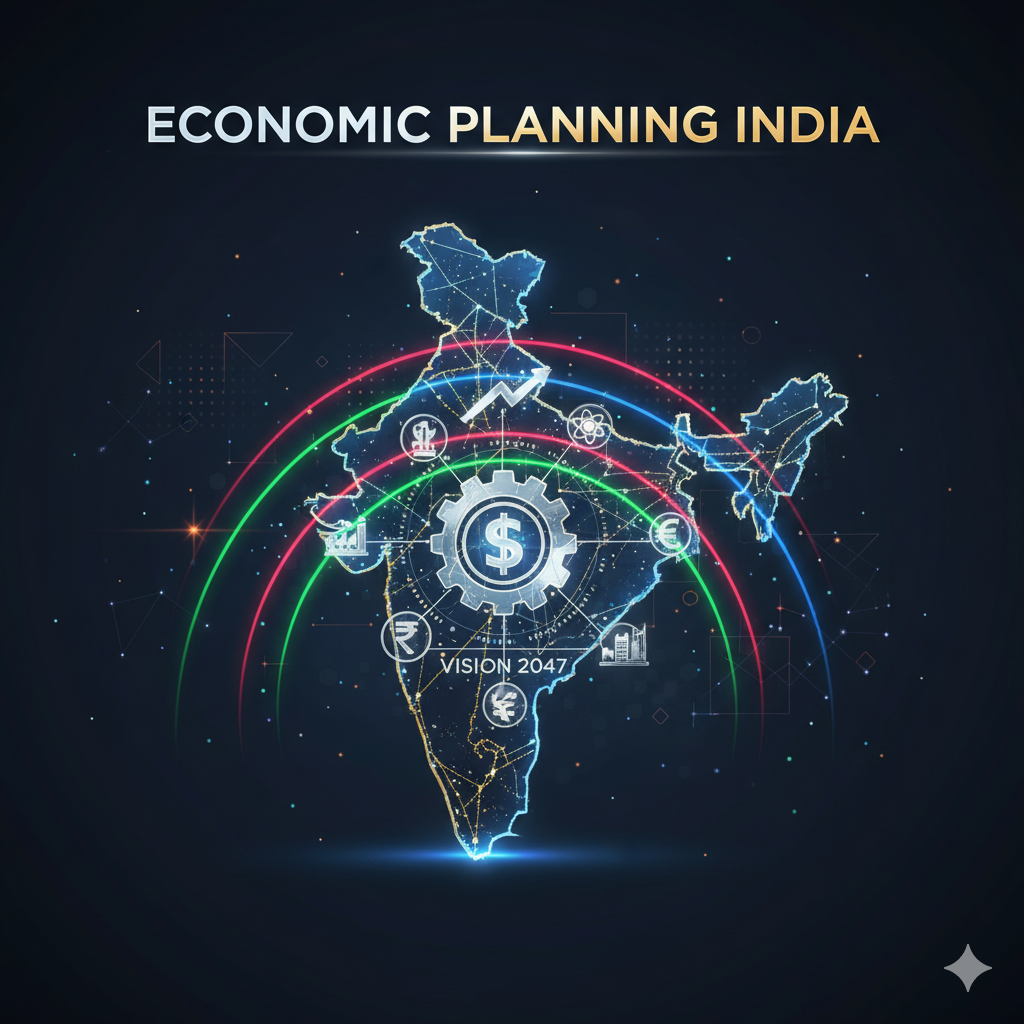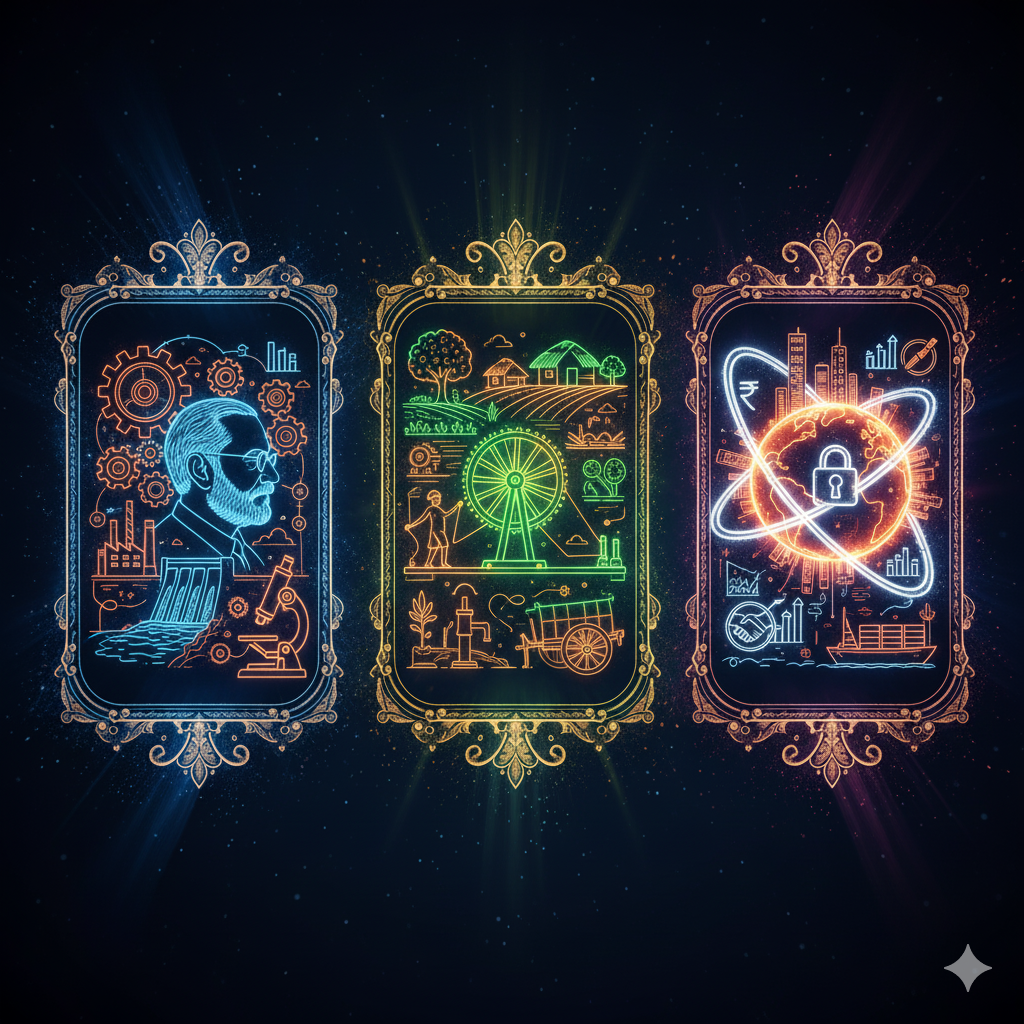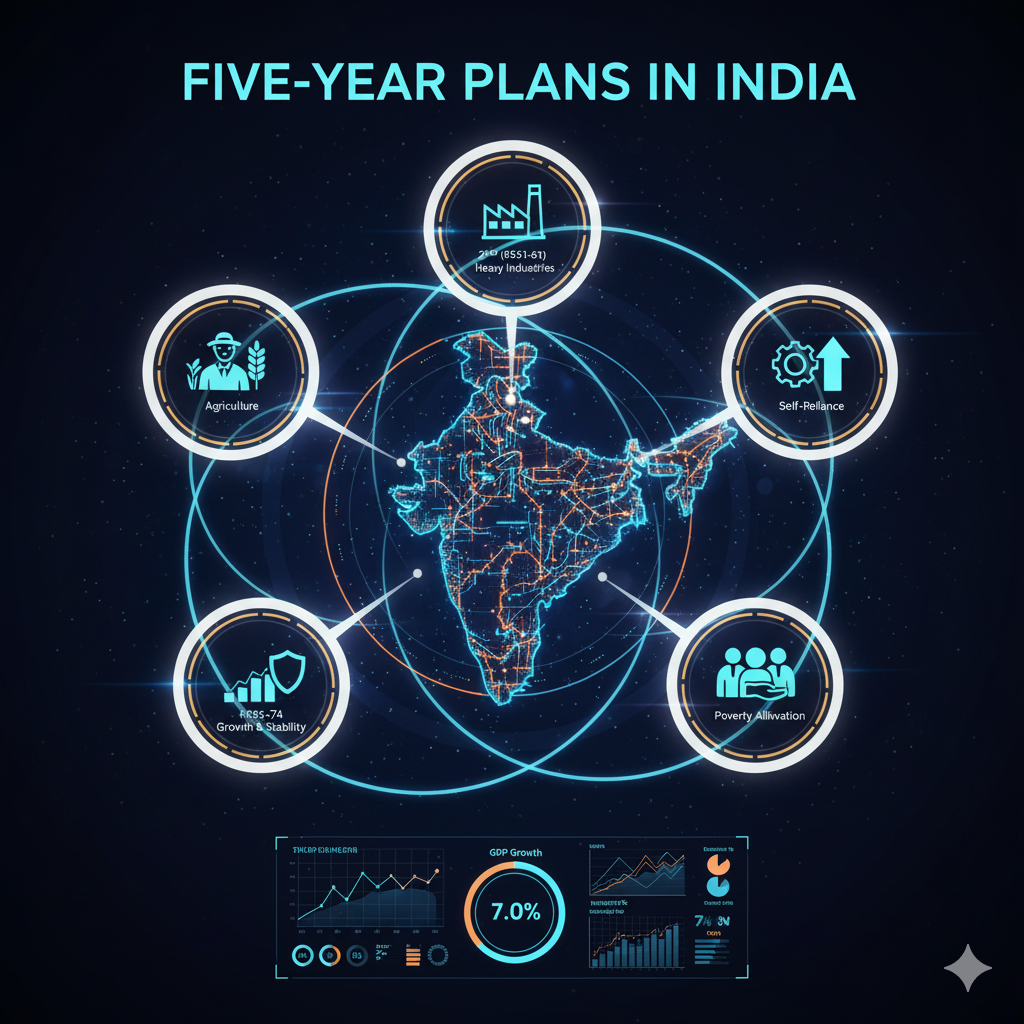The Indian economy, often referred to as the backbone of one of the world’s largest democracies, has exhibited remarkable resilience and adaptability in the face of global challenges. With a population exceeding 1.4 billion and a vibrant mix of industries, India stands as the fifth-largest economy globally, boasting a nominal GDP of approximately $3.7 trillion as of 2023 (IMF data). This article delves into the structural composition, challenges, and the road ahead for the Indian economy.
The Structural Composition of the Indian Economy
India’s economy is a unique blend of traditional and modern sectors, driven by agriculture, manufacturing, and services:
- Agriculture Sector:
Contributing nearly 18.3% to the GDP (2022-23), agriculture remains the primary livelihood source for over 40% of India’s workforce. The sector has evolved with the adoption of modern techniques like precision farming, yet small and marginal farmers face challenges like land fragmentation and water scarcity. - Manufacturing Sector:
As part of the “Make in India” initiative, manufacturing contributes about 17% to GDP. Sectors such as automobile, textiles, and electronics have received significant policy support. However, achieving global competitiveness remains a challenge. - Services Sector:
Dominating with a 55.4% GDP contribution (2022-23), the services sector is India’s growth engine. IT, telecom, financial services, and e-commerce have catapulted India onto the global stage, with the IT sector alone accounting for $194 billion in exports during FY 2022-23 (NASSCOM).
Key Growth Indicators
- GDP Growth:
India’s GDP grew by an estimated 6.1% in 2023, one of the fastest among major economies. This resilience can be attributed to strong domestic demand, policy reforms, and rapid urbanization. - Inflation and Monetary Policy:
Inflation, measured by the Consumer Price Index (CPI), hovered around 6.2% in 2023, primarily driven by food and fuel prices. The Reserve Bank of India (RBI) maintained a balanced approach with a repo rate of 6.5%, ensuring stability while addressing inflationary concerns. - Foreign Direct Investment (FDI):
India attracted $70 billion in FDI in 2022-23, reflecting investor confidence in sectors like technology, pharmaceuticals, and renewable energy.
Challenges Facing the Indian Economy
- Unemployment:
Despite high growth, unemployment remains a pressing issue, with the urban unemployment rate at 7.8% in November 2023 (CMIE report). A mismatch between skills and job requirements exacerbates the problem. - Income Inequality:
The World Inequality Report (2022) highlights significant disparities, with the top 10% of earners holding over 57% of national income. Closing this divide is essential for fostering equitable and inclusive development. - Environmental Sustainability:
Rapid industrialization and urbanization have led to significant environmental concerns, including pollution and depleting natural resources. In the 2022 Environmental Performance Index, India secured the 120th position among 180 evaluated nations.
Government Initiatives and Reforms
- Digital India Mission:
Aiming to transform India into a digitally empowered society, the initiative has bridged digital divides, particularly in rural areas. India boasts over 850 million internet users as of 2023. - Production-Linked Incentive (PLI) Scheme:
Launched to boost manufacturing and exports in sectors like electronics, pharmaceuticals, and renewable energy, the scheme has attracted investments worth ₹2.4 lakh crore ($30 billion). - Green Energy Transition:
India has pledged to attain net-zero carbon emissions by the year 2070. Investments in solar energy and electric vehicles are paving the way for a greener future.
The Road Ahead: Vision 2047
The Indian government envisions transforming the nation into a $10 trillion economy by 2047, marking 100 years of independence. This ambitious goal requires a multi-pronged strategy:
- Boosting Infrastructure:
Investments under the National Infrastructure Pipeline (NIP), valued at ₹111 lakh crore, are expected to revolutionize connectivity and trade. - Education and Skill Development:
Addressing unemployment hinges on enhancing vocational training and aligning curricula with industry demands. - Strengthening Global Partnerships:
India’s participation in initiatives like the G20 and QUAD underscores its commitment to fostering global cooperation.
Conclusion
The Indian economy, marked by its diversity and resilience, stands at a pivotal juncture. By addressing challenges like inequality and unemployment while embracing innovation and sustainability, India is poised to cement its position as a global economic powerhouse. As the world watches, India’s journey will undoubtedly shape the economic narrative of the 21st century.




